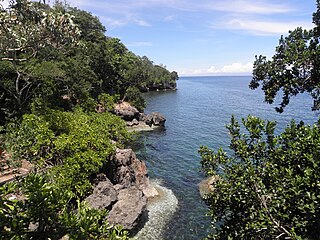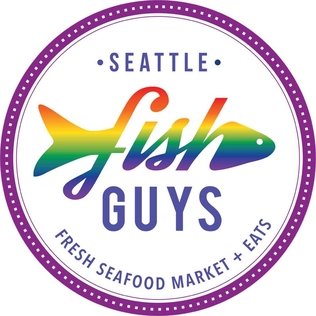This is a preliminary list of seafood used in Hawaiian cuisine.
This is a preliminary list of seafood used in Hawaiian cuisine.
Commonly caught fish in Hawaiian waters for poke, found at local seafood counters include (alternate Japanese names are indicated in parentheses): [1] [2] [3]
Other commercial caught local fish that can be eaten raw (for sashimi, poke or lomi) according to the FDA include: [1] [4] [5] [6]
(Hawaiian vernacular name followed by US market name)
Kona kampachi (kanpachi) is farmed off the coast of the Island of Hawaii. [7]
Most fresh shellfish, including octopus, can be safely consumed raw with caution but are often cooked (or at least cured) especially when being sold commercially as poke. [8] [9] [10] [11] [12] [13]
The "raw" seafoods listed above additionally can be cooked. The following have not been listed by the FDA safe for raw consumption, but are traditionally caught in Hawaii for consumption also: [14]
A yellowtail may be any of several different species of fish. Most commonly the yellowtail amberjack Seriola lalandi is meant. In the context of sushi, yellowtail usually refers to the Japanese amberjack, Seriola quinqueradiata. Other species called simply "yellowtail" include:

The cuisine of Hawaii incorporates five distinct styles of food, reflecting the diverse food history of settlement and immigration in the Hawaiian Islands.

Poke is a dish of diced raw fish tossed in sauce and served either as an appetizer or a main course.

Cephalopholis argus, the peacock hind, roi, bluespotted grouper, and celestial grouper, is a species of marine ray-finned fish, a member of the subfamily Epinephelinae, the groupers, and part of the family Serranidae, which also includes the anthias and sea basses. They come from the Indo-Pacific which is variously a commercial gamefish, an invasive species, and occasionally an aquarium resident. Its species name comes from its resemblance to the "hundred staring eyes" of the monster Argus who had a hundred eyes and was the shepherd of the goddess Hera in Greek mythology.

Coral reef fish are fish which live amongst or in close relation to coral reefs. Coral reefs form complex ecosystems with tremendous biodiversity. Among the myriad inhabitants, the fish stand out as colourful and interesting to watch. Hundreds of species can exist in a small area of a healthy reef, many of them hidden or well camouflaged. Reef fish have developed many ingenious specialisations adapted to survival on the reefs.
In the 10th edition of Systema Naturae, Carl Linnaeus described the Pisces as:
Always inhabiting the waters; are swift in their motion and voracious in their appetites. They breathe by means of gills, which are generally united by a bony arch; swim by means of radiate fins, and are mostly covered over with cartilaginous scales. Besides the parts they have in common with other animals, they are furnished with a nictitant membrane, and most of them with a swim-bladder, by the contraction or dilatation of which, they can raise or sink themselves in their element at pleasure.

The Initao–Libertad Protected Landscape and Seascape is a protected area in western Misamis Oriental, Philippines. At 1,300.78 hectares, the park includes the limestone forests of the old Initao National Park, locally known as Lasang, as well as their adjacent marine waters in the municipalities of Initao and Libertad. Established in 2002, it is home to the Lasang Secret Adventure Park, a theme park which is being promoted by the provincial government as an eco-tourism and corporate events destination. The park is 27 kilometres (17 mi) southwest of the Laguindingan Airport and 59 kilometres (37 mi) west of the provincial capital Cagayan de Oro.

Jakarta Aquarium and Safari is a marine and freshwater aquarium located within a retail and leisure complex Neo Soho in Jakarta, Indonesia. The aquarium is home to hundreds of mammal, reptile, insect and various types of Indonesian marine fish, is to introduce to the next generation the biodiversity of the archipelago starting from islands, forests, and mangroves.

Seattle Fish Guys is a fish market and restaurant in Seattle's Central District, in the U.S. state of Washington. Desiree Chinn and Sal Panelo started the business in 2016. Seattle Fish Guys has garnered a positive reception, especially for its poke, and is considered among the city's best seafood establishments.